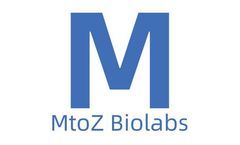Tumor Samples Articles & Analysis
9 articles found
The ACE program supports academic researchers in their early drug discovery and development initiatives by providing access to the POAI proprietary active machine learning platform and frozen patient DTC samples. Through this project, the POAI active machine learning technology constructed a predictive model of tumor sample response to ...
Discover how matched tumor-normal sequencing can help clinical researchers detect the somatic origin of variants with certainty. In the era of precision oncology, it has become increasingly common for patients diagnosed with cancer to undergo tumor sequencing. Identifying the mutations that make up a tumor’s genomic landscape can help guide selection of targeted therapies and inform ...
In epigenomics experiments, the use of parallel samples is to ensure the reliability and repeatability of experimental results. ...
To address this unmet clinical need, Predictive Oncology (POAI) completed a retrospective study in collaboration with UPMC Magee-Womens Hospital to build a data-driven artificial intelligence solution leveraging machine learning (ML) to predict survival outcomes for ovarian HGSC patients. Patient tumor samples were characterized by a diverse set High grade serous ...
The results show that most common pediatric brain tumor samples can be differentiated with DMS. DMS shows promise in becoming and additional instrument for real-time diagnosis of brain tumors. (The header image for this post shows an illustration of the laser sampling unit. The system is capable of vaporizing small tissue ...
Consequently, WES has become the preferred approach for comparing tumor-normal samples. Tumor Mutational Burden (TMB) Analysis using WES Tumor Mutational Burden (TMB) quantifies the number of somatic mutations per megabase (MB) of the longest transcript sequence. Although TMB shows potential as a biomarker for immunotherapy in ...
Results Our results showed that normal cervical tissues were completely segregated from the cancer samples using about 40 genes whose expressions were significantly different between these specimens. In addition, clinical stage IB and stage IIB tumors could also be classified based on their signature expression patterns. Most importantly, some of the ...
The use of tumour markers to diagnose, assess prognosis, and select a suitable cancer treatment has become possible due to the development of inexpensive and user-friendly molecular analysis tools such as the polymerase chain reaction (PCR). Maintaining the integrity of biomarkers during their processing and storage is therefore of critical importance to accurately diagnose and give prognosis ...
In the study, the researchers propose a new method that mainly involves extensive screening of monoclonal antibodies against primary human tumor samples with the aim of identifying cancer-specific conformational epitopes throughout the protein that cannot be identified by transcriptome or proteome analysis. ...








